Paul Oettinger with Pals Brewing Company
This week in the Arryved Client Spotlight we’re taking you to North Platte, NE—a city located on I-80 where the community is strong and the beer is flowing. Welcome to Pals Brewing Company! What started as a passion for homebrewing resulting in some great beer, evolved into a family-run business located on acres of space. …
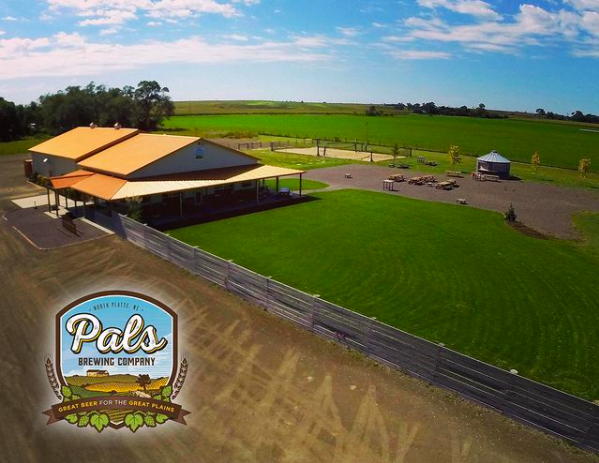
This week in the Arryved Client Spotlight we’re taking you to North Platte, NE—a city located on I-80 where the community is strong and the beer is flowing. Welcome to Pals Brewing Company! What started as a passion for homebrewing resulting in some great beer, evolved into a family-run business located on acres of space. At Pals you’ll find Paul Oettinger, Head Brewer and owner, who has mastered the nuances of flavor as they move through your palate. He has also created a space within a community that hasn’t seen anything like it before—a place where strangers gather to enjoy some supreme beer and leave as ‘Pals’.
In this special interview, David Norman, Arryved’s CEO, sat down with his “old” friend Paul to talk all about Pals Brewing Company. Check it out!
David: For posterity, tell us about how this all started.
Paul: I worked in pharmaceutical and medical devices since I graduated with a bachelor’s degree in microbiology back in ‘96. While I was in college, I bought a homebrew kit from the local homebrew shop (which still exists) and started homebrewing. I made a couple batches, they weren’t great but it was fun. When I moved to Kalamazoo, Michigan and started drinking Bells, I also found out they had a homebrew club. I joined and met a friend at the first meeting and we quickly became best friends—and started brewing together. The beer kept turning out better and better with all the things we learned at the homebrew club. We were lucky because the homebrew club president was a professional brewer. He taught us all kinds of stuff about cleaning and sanitizing which I had a pretty good handle on from being in pharmaceutical microbiology.
I almost opened a brewery on 4 different occasions. Several years later at Thanksgiving out here in Hershey, NE, my brother and his wife suggested that the right place to open a brewery would be good ‘ol North Platte, NE. After talking it over with my wife and co-founder, Amy, we decided, “Well, at least we’d have help.” We knew we didn’t know enough to really pull this off so they helped get it open. The rest is history.

Image courtesy of Pals Brewing Company
David: Things have come a long way since our first meeting at Applebees!
Paul: We probably didn’t even have a building then.
David: You barely had a building. I think the frame was up at that point.
Paul: Yeah, there have certainly been a lot of changes here at Pals since then and hey, Arryved has changed a lot, too, in that time by the way. We didn’t realize when we opened that pizza and the nachos would be so popular. We didn’t realize how well we’d be welcomed into the community. We didn’t realize how much of a competitive advantage our Point of Sale system was going to be either. North Platte is a bit unique, it doesn’t have a huge bar culture but the people have really embraced a place where just drinking isn’t really the focus. It’s more about the community, hanging out with your friends, a welcoming atmosphere, having a different environment you can go into—being able to go outside, being able to see some live music if you want to—and making it more about the food and the gathering than about going out and drinking.
They’ve also embraced all the things we do differently because we use Arryved. Ordering at the table and having a taster show up before you even get the rest of the order in. That blew people’s minds. Suddenly waiting for your server to come back with your credit card receipt at other restaurants wasn’t so fun anymore.
David: Tell me about why you chose the space you’re currently in?
Paul: The original vision called for a large outdoor space where we could have live music, outdoor games, patio space, and be able to have some bigger events. Every year except this year we’ve had beer tasting events at Pals with somewhere between 10 and 15 breweries and wineries; we need to be able to house 400 people outside. Turns out we can host about 3,000 people outside. We have an outdoor bar where people can get beers, we have a volleyball court, this spring we’re going to build horseshoe pits, and we do cornhole league out here in the summertime. Downtown didn’t have buildings with outdoor space that would allow us to execute that vision so we started looking at spaces in North Platte. On a whim my brother found this property and it had everything we were looking for.
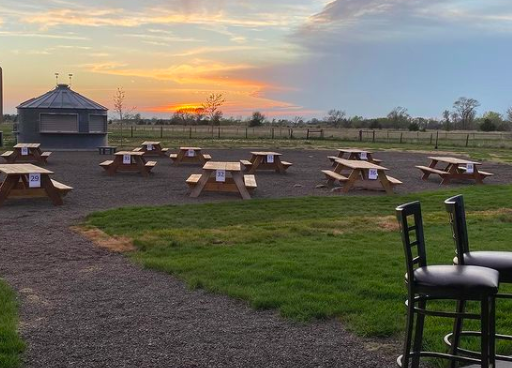
Image courtesy of Pals Brewing Company
David: From our perspective—places that are in more rural communities, like North Platte, as opposed to cities, tend to still make numbers and find ways to get things done. What has been your experience this past year?
Paul: What’s been amazing is we didn’t have a single person on our staff get sick all summer and fall and we’ve had travelers from all across the country. We were in direct contact with people from all over— New York, California, we had Washington Staters, Oregonians, Arizonians—people going along I-80 in their campers and stopping here to eat. From about May on, we never shut down our taproom and we never went to reduced capacities. A lot of people would come and request outdoor seating obviously.
It’s been a really interesting summer trying to navigate all the different changes; I don’t know what to tell someone who’s in a city where they’ve been mandated to shut down and go to takeout only. Packaging margins are so much thinner than beer over the bar. You’ve got to find some creative ways to get people to come in for take-out beer. A bottle of beer at a brewery our size, we’re going to make $.10 to $.12 on that sale. When you start looking at a 6-pack, you’re looking at maybe a $1. A 64oz growler is about the size of a 6-pack but if we could sell that for $20, we make $16 on that same sale we would have made a $1.
David: Are you saying that growlers and crowlers have been moving far more?
Paul: We’re going through 1000 crowlers in a month or two. When you have take-out, you still don’t make the same margin on growlers and crowlers. We’re a little different of course than, let’s say Denver, where there’s a brewery on every corner and if I don’t like one brewery’s prices then there’s a brewery across the street with a $10 growler special. We’ve got a second brewery in town now but not quite as many options to choose from if you want fresh beer.
One thing I would advise breweries to do is make something different that no one else makes and charge what you think you need to stay open. If customers like your beer and they want to support you, they’re going to pay it.
The other thing that really helps us—we have food. If you don’t have food, you need to figure out how to have food, period. If that means you have to retrofit one part of your taproom to be a kitchen, I would spend the money on that just to get people in the door. It’s way better than trying to survive on beer when, let’s face it, a lot of people don’t want to go out and drink right now.
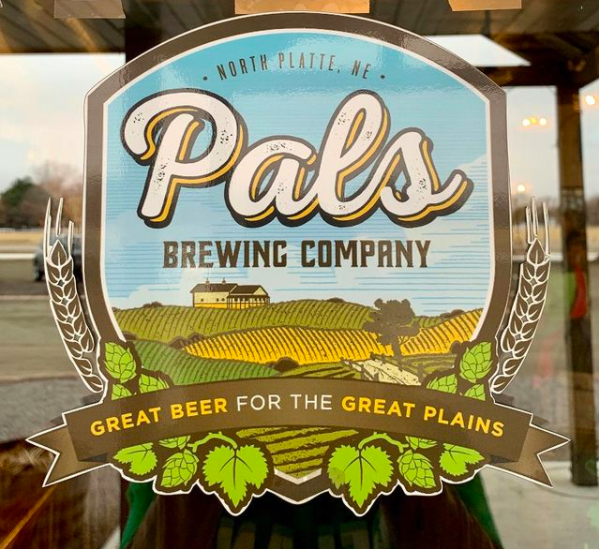
Image courtesy of Pals Brewing Company
Dave: Planning in these times is vastly different because beer has a longer shelf life. Food doesn’t have the same shelf life, how do you adjust?
Paul: We had to build a bigger walk-in than we would have otherwise—the cooler that serves all our tap beer is big enough to also store food. The other thing you want to do when you have food is pick a very limited menu and do it to the best of your abilities. That’s what we did right from the gate. We make pizzas that are different from anyone else, they’re delicious, and that’s our main focus. We have a couple small plates but we really only have about 18 menu items.
There’s ways to do food that doesn’t break the bank. I think if you invested a little more upfront and don’t go with the prepackaged food, your quality is going to be way better. Pizza is a great option; partner up with a frozen pizza place and though you won’t get the same margin as if you made them yourself, there’s lots of options and it doesn’t require a huge amount of space. You could make a lot of food in a small amount of space if you put your mind to it.
David: I was there on Pals’ opening day and I distinctly remember people were surprised about all the beer options. How have you gotten people to come out of their shell and expand their palates?
Paul: I think there’s a natural palate progression that most of us who have been into craft beers for a long time went through. For me it was about 1998, 22 years ago that I went through the progression. When at first you’re like, “Oh, this hefeweizen is totally different from this crappy beer I’ve been drinking. That’s delicious!”
That’s probably why we make such a variety of beers because I like so many different styles of beer. There are very few beer styles that I won’t go back for a second pint if it’s made well. I still haven’t quite wrapped my head around the rauchbier but I can usually muscle my way through a pint.
People in this town were so used to the yellow fizz but once they got their palate on a Jalapeño cream ale which smelled like fresh jalapeños but didn’t have the big bite, that really opened their world that beer can be just about anything.
It has become an interesting phenomenon to watch people progress into, “I hate beer!” and then we introduce them to just a taste of Pineapple Express and their eyes light up and they go, “Oh man, that’s not like any other beer I’ve ever had.” All of a sudden, if they come in and you don’t have Pineapple Express on, they’re pissed.
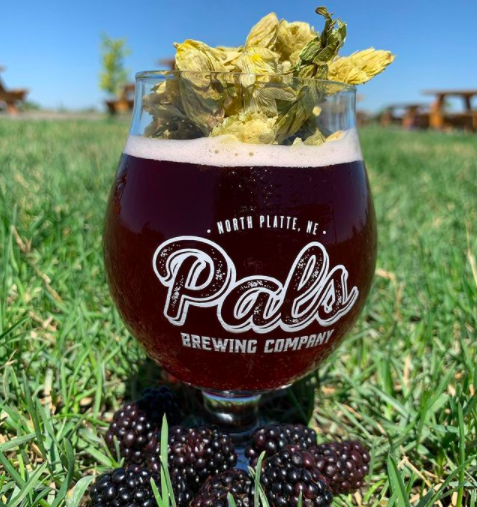
Image courtesy of Pals Brewing Company
David: Every time you can win a convert you feel like you’ve done your job as a brewer at that point, too.
Paul: One of our biggest challenges, quite frankly, is that because everyone’s palate is so different, they all have their favorite beer that they want you to keep on all the time. Anyone who runs a brewery knows they can’t have the same 16 beers on all the time, there’s not a good enough way to plan that out. It doesn’t matter how many beers you have on tap, someone is going to want something different.
Our philosophy has always been seven core beers on tap, one or two of those are seasonal rotations, and the rest of the taps are always rotating. We’ve had two 2-barrel fermenters pretty much since the first year we were open. We’ll make small batches, one-off beers that if they turn out horrendous, so what. I don’t mind dumping a barrel and a half of beer if it’s that bad. But the thing is, just like when you’re cooking, if you screw up the sauce there’s always a way to make it better. If it’s not technically sound, well then I’ll just dump it and start over. But if you get a beer that has too much vanilla for example, ok, some coffee will clear that right up and now you have a coffee vanilla. If that doesn’t work then, ok, let’s put some strawberry in there. Now it’s a strawberry coffee vanilla. It’s normally about balance, you just have to use your palate to guide you.
David: How do you go about advertising those small batches to your customers?
Paul: Facebook used to be the advertising of choice. What we’ve found recently that people either have Facebook fatigue or Facebook is putting new algorithms in place that it’s a lot harder to grow a post organically—if you’re not willing to pay, you’re not going to play.
We’re a brewery, inevitably what gets the most interactions on social media are new pizzas. As a brewer that is, grrr. What I think is a really great beer gets 50 interactions and then we put out some crazy new pizza and there are 300 interactions. It’s a humbling thing.
What really works well is if we can pair the two up. In January we’re coming out with this new pizza and it pairs really well with this new beer release. We’ve been doing small batches for so long and we try to keep up with a regular cadence of those that new beer releases every week is just part of our DNA.
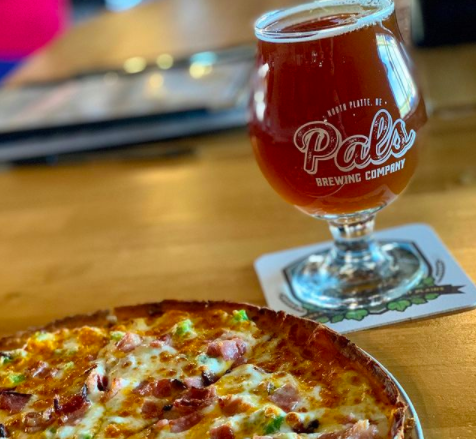
Image courtesy of Pals Brewing Company
David: A year from now, if you were to look into your crystal ball, what do you see craft looking like?
Paul: I think we’re going to see a big resurgence of the outdoor space and the events coming back. There’s going to be a lot of pent up demand to get out and socialize after the winter. I think you’ll see by summertime people are more willing to go out.
I can’t wait for the day people are willing to invite a stranger into some place. I can’t wait to see everyone’s shining faces where it’s not just deer in the headlight eyes behind a mask. The sign at Pals says, “Come as strangers leave as Pals.” Even during this past year, we’ve had people sit outside and say they are willing to have people share their table if people come in because they are only 2 people sitting at an 8 person picnic table. That has been rare but it still happens when it used to be commonplace.
Hopefully that is what breweries can do for society come springtime, be the place that brings people back together.
